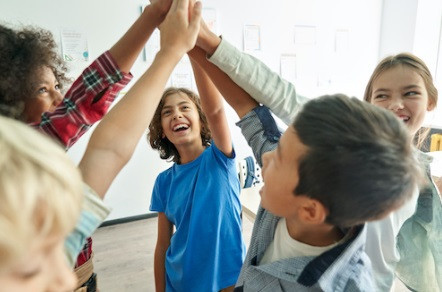
GCED Basic Search Form
Quick Search
Close
Вы здесь
Новости
The bookend model: Using SEL to support before- and after-school programs
Дата публикации:
2023/11/24

16 October 2023
by Damion Morgan/ Social Emotional Learning Specialist, Windsor Public Schools
Before- and after-school programs with SEL components offer critical support and safe spaces where students build confidence and a sense of belonging
Key points:
-
SEL is critical for students, and it should be a key part of before- and after-school programs
-
SEL should be embedded throughout every program, starting with students’ arrival
-
See related article: It’s critical to promote mental health supports at the start of the school year
Incorporating social and emotional learning (SEL) throughout the school day has risen in popularity over the last few years, especially to counteract the increasing rates of anxiety and depression in students since the COVID-19 pandemic. Lost in the discussion, however, is the importance of before- and after-school programs–the bookends of the school day.
These before- and after-school programs dedicate a significant amount of time to activities that can help students develop social-emotional skills. In fact, a 2021 survey of program providers found that in addition to academic enrichment, 86 percent of programs give young people the time to interact with their peers and build social skills. Plus, students themselves report that 80 percent of the programs give the students time to talk with peers and adults about how they’re feeling. Yet, staff may not approach every interaction with intention to foster social and emotional growth.
Before- and after-school programs offer critical support, including caring and supportive mentors, as well as safe spaces where students build confidence and a sense of belonging. They also provide opportunities to work collaboratively, problem solve, and think critically. SEL skills are not separate from those activities–SEL is not sprinkled on the cupcake; it’s part of the cupcake. Before- and after-school programs must make every interaction more intentional to complement classroom learning.
These programs help children develop strong social skills, gain self-control and confidence, improve work habits and grades, and build healthy relationships with peers–all the things we want young people to have to be successful. But to ensure that these programs are set up for success, there are two essential questions every program coordinator should ask: “How well do I know my students?” and “How can I ensure my program meets their needs?”
Running an effective program
SEL should be embedded throughout every program, starting with students’ arrival. How do you greet students when they show up? When a student hears a caring adult say their name, it instills a sense of belonging, supporting self-awareness.
An overview of the schedule at the beginning of the program is important. Kids need to learn how to self-manage and regulate their emotions. For a young person who is excited for the craft part of the program, understanding what else is on the agenda is key to them mastering the skills of self-management and self-awareness.
The actual activity is when the rubber meets the road. As program directors and administrators, we need to analyze the activities–how much time are they alone, in small groups and in large groups. It is important to outline the program activities so students have an opportunity to participate in all three options and balance between them. As students develop, they must know how to interact at all three levels. If you find that some students don’t perform in large groups, you may have to reevaluate how well you know your students. For example, if behavior problems spike when you do large groups, maybe the answer is that you have too many students in these groups.
Finally, do you have a clearly defined dismissal policy? This is an ideal opportunity to introduce students to social awareness. When your program has an established system of welcoming and dismissing students, it demonstrates consistency. It also helps young people see how their individual behavior fits into the overall success of the program. This is a key component of social awareness, where students understand how they fit into the larger community in various ways. Additionally, it’s a way to model other ways they use social awareness for example while leaving a store or restaurant. It’s a reminder that the SEL skills developed in school are useful in all aspects of life.
For students, SEL is not just limited to the classroom. Before- and after-school programs play an equally important role. With every interaction between staff and students, these bookends to students’ days provide the opportunities to hone these competencies and grow, if there is consistency and intention in programs’ approach.
